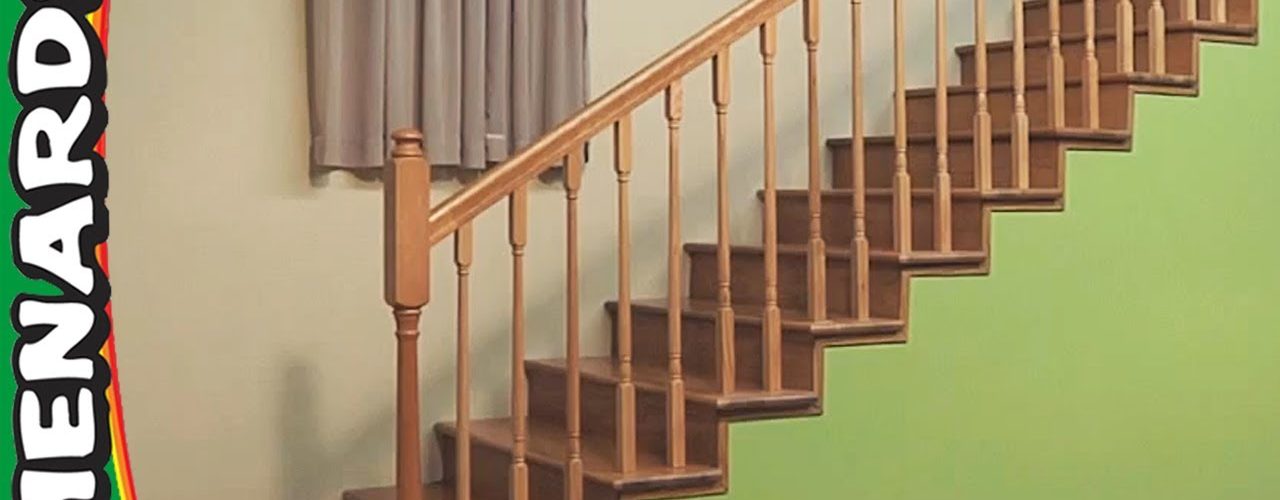Stairs are an important component of the home. Stairs must be constructed properly in order to ensure the safety of the inhabitants of the home. Stairs may either be delivered to the home pre-fabricated or a carpenter can build the stairs in the home. The first type of stair is called a “mill-made” stair, and the second type is called a “carpenter-built” stair. Mill-made stairs typically come with prefabricated stair railings that can be installed according to the instructions. Carpenter-built stairs are typically more affordable and flexible. Carpenter built stairs may have custom railings that can be stained or painted to match the hardwood, carpet or other stair covering.
The type and location of the stair case will determine the flexibility of a stair railing. Most stair cases will have a standard stair railing that may be simply attached to the wall via brackets. These types of stair railings will meet most safety and building code requirements. Other stair railings require more careful work and planning to construct a proper stair railing.
For example, a simple stair railing may be constructed of several “groove –and-tenon joints and dowels.” The shape of the baluster may vary depending upon the level of ornate design the home owner desires. In general, a homeowner can follow the following steps to construct a safe stair railing.
1. Determine the position of the post installation. Trace a line around the post on the stair tread to determine the proper positioning for the post. Make starter holes by drilling holes at the four corners of the cutline. With a jigsaw cut, complete the cut of the first hole to the appropriate depth to secure the post or dowel.
2. Properly secure the post in the drilled hole. Make certain the post is squarely positioned inside the hole. Next, drill holes for the bolts to secure the post. Drill a hole through the post. The hole should also penetrate the riser, but not go completely through the riser. The hole should be large enough to accommodate the head of the bolt. Smaller holes must also be drilled inside these holes to secure the posts.
3. The bolts may now be inserted to secure the post to the riser. Once the bolts are inserted into the hole, place a washer, then a nut to secure the bolt in place. The bolts will be slightly inset into the wooden riser. Place glue into the inset hole. Then, place a wooden plug to seal the hole. A hammer may be used to gently tap the wooden plug into place. The wooden plug should be flush with the riser of the stair case.
4. Determine the stair tread elevation. At the proper elevation, the rail should be attached to the post and possibly a ceiling beam via a clamp. The posts are typically attached at the second step and one of the upper steps for maximum safety.
5. The perimeter of the post top should be traced on the bottom of the railing to indicate the cutline. A parallel line must also be drawn for the tenon of the post. The tenon may be cut properly with a handsaw.
6. Use a router to create a groove on the underside of the hand rail. The tenon will fit into the groove. Likewise, a groove will be placed in the baluster to secure the tenon into place.
7. Place the tenon into the groove of the handrail. Secure the hand rail to the ceiling beam by drilling a hole through both and securing it with a “lag screw” and a washer. Place a dowel in a drilled hole through the railing and post joint to secure the hand rail in place.
8. Upper supports must be cut to lie flush against the horizontal railing. This piece should be cut separately. This piece will be attached to the angled portion of the handrail.
9. The angled portion of the handrail should be properly secured to the horizontal railing and the tread below. Dowels will be instrumental in securing the angled portion of the handrail in place. Glue must also be used to secure the dowels. After the two banisters are in place, use a nail gun to attach the balusters to the railing groove.
References:
Extreme HowTo:
Ron Hazleton – Stair Railing



